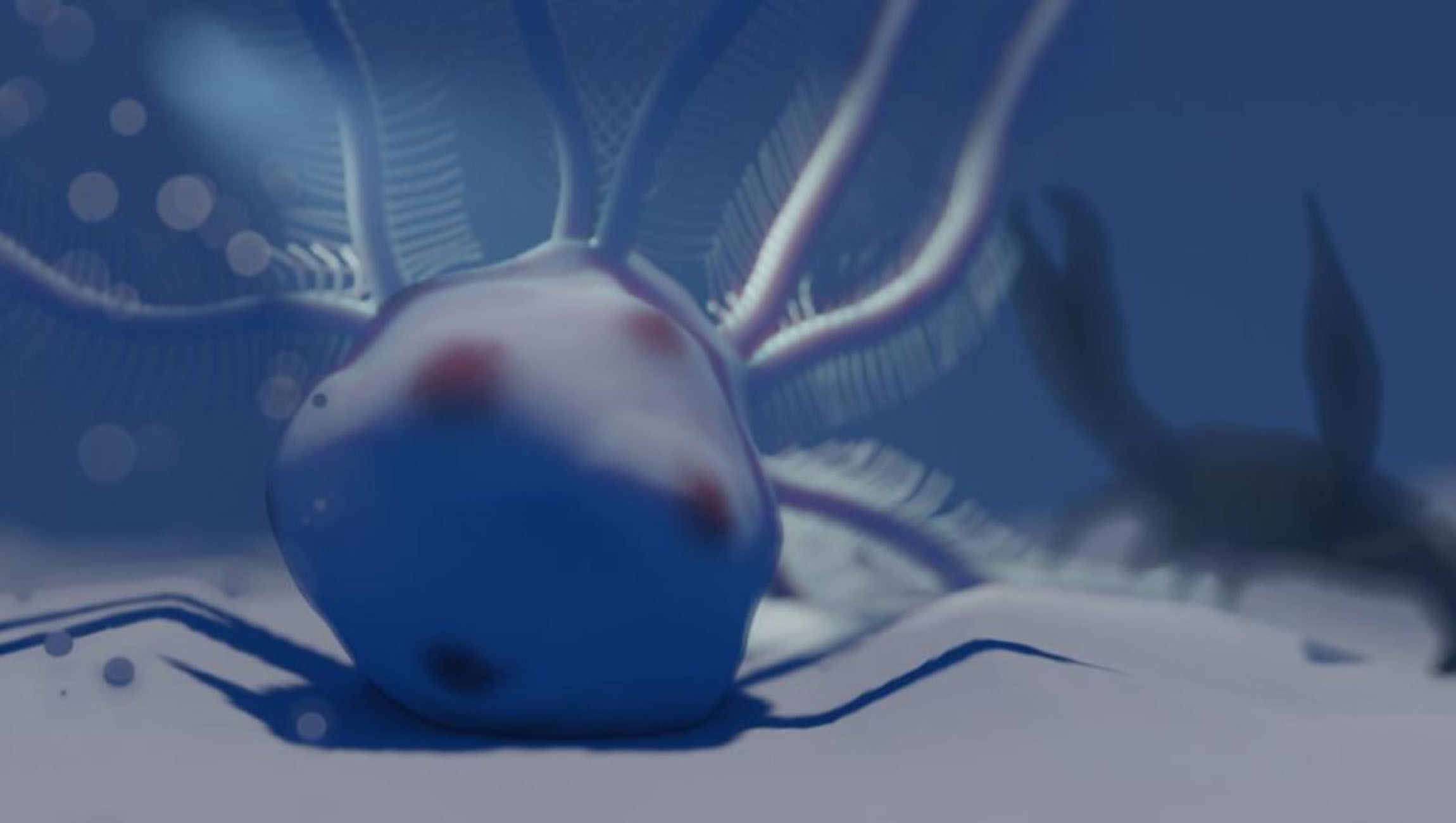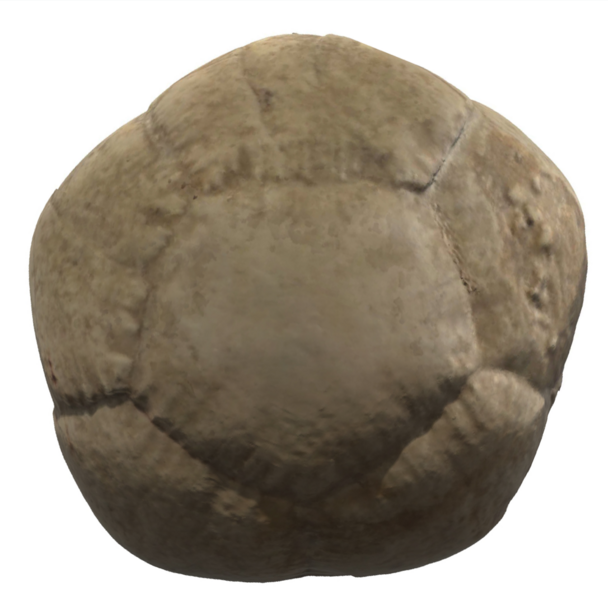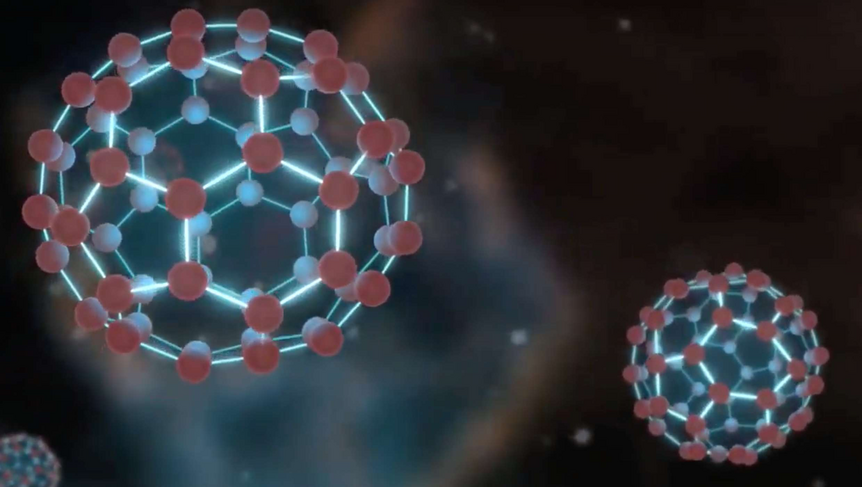Create a free profile to get unlimited access to exclusive videos, sweepstakes, and more!
Fossils of extinct sea creatures reveal the same 3D structure as a bizarre molecule

The shapes that life forms take in nature can be stranger than science fiction. Sometimes, they’re even stranger than science.
Nobody thought any living thing would appear in the alien shape of a buckyball until now. Buckminsterfullerine molecules were named after artist Buckminster Fuller’s geodesic spheres (think of Disney’s Spaceship Earth). Molecular buckyballs are made of carbon atoms that arrange themselves into a 3D structure of hexagons and pentagons not unlike a soccer ball. Not too long ago, these bizarre molecules were found bouncing around in space. Now team of international scientists recently unearthed the fossils of two peculiar prehistoric crinoids —the first thing in that shape that was actually alive.
“Evolution has to work with what already exists, so it takes convoluted paths to solve the problems lifeforms face," University of Essex research fellow Jennifer Hoyal Cuthill told SYFY WIRE. "This means that something which evolved once might never evolve in exactly the same way again. However, functionally or structurally similar solutions to the same problems are often seen repeatedly, a phenomenon called evolutionary convergence."
Crinoids first emerged about 300 million years before dinosaurs roamed the earth. These bizarre creatures were almost all arms, anchoring themselves to the seafloor with a flexible stem. While most are extinct, there are a few still living today, which are also related to other echinoderms (spiny creatures whose name literally means “spiny skin”) such as starfish and sea urchins. Uintacrinus socialis and Marsupites testudinarius lived about 80 million years ago in seas that had grown shallower and increasingly dangerous. Mesozoic predators like crabs and fish were threatening their existence, since things stuck at the bottom of the ocean didn’t have much of an escape plan. When you can’t escape, you evolve. Both species had just happened to evolve into living soccer balls with tentacles.
"The closest relatives of the extinct crinoids Marsupites and Uintacrinus are thought to be the living comatulid crinoids, also known as feather stars," Cuthill said. "These are amazing animals in their own right, including examples which live on coral reefs and can swim to escape predators. However, they lack the hugely enlarged, buckyball-shaped calyx of their Cretaceous relatives."
What Cuthill and her team, who recently published a study in Paleontology, found were fossilized structures made up of pentagons and hexagons that they believe evolved from the crinoids’ need to evade anything that was going to eat them. This is the first time that the structure of a Buckminsterfullerene molecule has ever been observed in a creature, even an extinct one. Echinoderms are known to have radial symmetry, meaning that they are symmetrical from the middle outward. Just think of the matching arms of a starfish. This might be one factor behind the strangely symmetrical, but still symmetrical, buckyball structure of U. socialis and M. testudinarius. The hollow structures that survived in fossil form gave these crinoids the buoyancy they needed to float wherever the current would take them. They could even form a sort of foot to sit on the ocean floor for a while before floating on.
Echinoderms have no brains, though they do have nerves extending from their mouths to the ends of their arms. Creatures that couldn’t think for themselves were probably better off letting the ocean carry them away from the snapping jaws and pincers of fish and crabs. At least they had enough of a sense of where they were to be able to hang out for a while before letting the sea take them wherever it wanted. The structure of M. testudinarius was made up of fewer plates, but these were larger and offered more stability. U. socialis had a more complex structure of plates that formed a dome, which was less stable but would probably have fascinated Buckminster Fuller even more. If living creatures morphed into this shape once, could something like this ever evolve again?
"We can predict that buckyball structures might be found in life forms which have structures with 3-way connections, include pentagons and hexagons and need to be rounded and strong," Cuthill said.
Evolution didn’t just stop after the last mass extinction. Creatures are still evolving right now, so maybe something out there will pull this stunt in several million years.




























